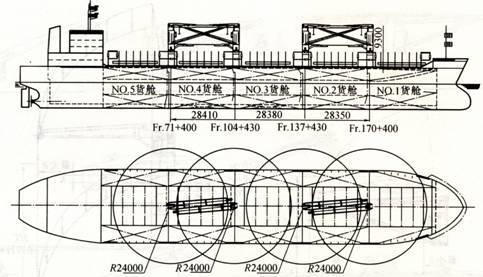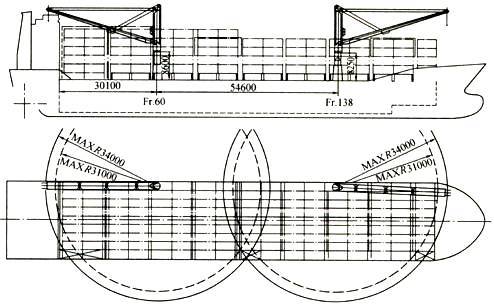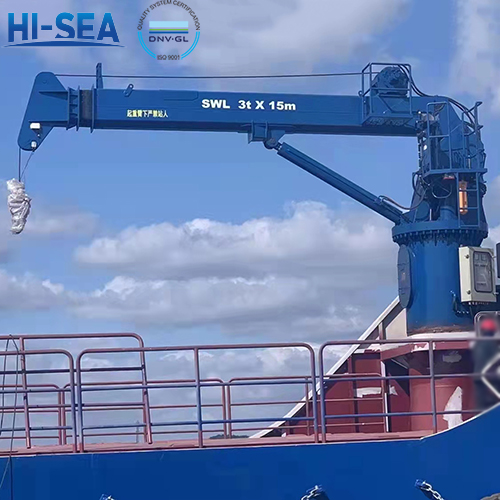
Arrangement of marine cranes
The arrangement of marine cranes usually depends on the design and purpose of the vessel, as well as the type and functional requirements of the crane. Marine cranes are usually arranged on the center-line of the hull between two cargo holds, as shown in Figure 1. This arrangement can accommodate cargo loading and unloading operations in both the front and rear compartments. The front and rear cranes can be combined to lift and unload heavy cargo.
Overview
The arrangement of marine cranes usually depends on the design and purpose of the vessel, as well as the type and functional requirements of the crane. Marine cranes are usually arranged on the center-line of the hull between two cargo holds, as shown in Figure 1. This arrangement can accommodate cargo loading and unloading operations in both the front and rear compartments. The front and rear cranes can be combined to lift and unload heavy cargo.
Figure 1 - Arrangement of wooden ship cranes

For container ships, the above arrangement is not ideal because it will affect the stacking of containers at the crane. Therefore, a slender crane has been developed, which only occupies one container space and has a minimum working radius of only 2.4m. Even the container stack next to the crane can be lifted. Therefore, most container ships currently use slender cranes, which are arranged on the ship's side, as shown in Figure 2. This arrangement can increase the number of ship containers and improve economic efficiency. However, special attention should be paid to the issue of lateral balance when using this arrangement for ships that are too small.
Figure 2 - Arrangement of container vessel shipboard cranes

For more marine crane information, kindly please click here.





